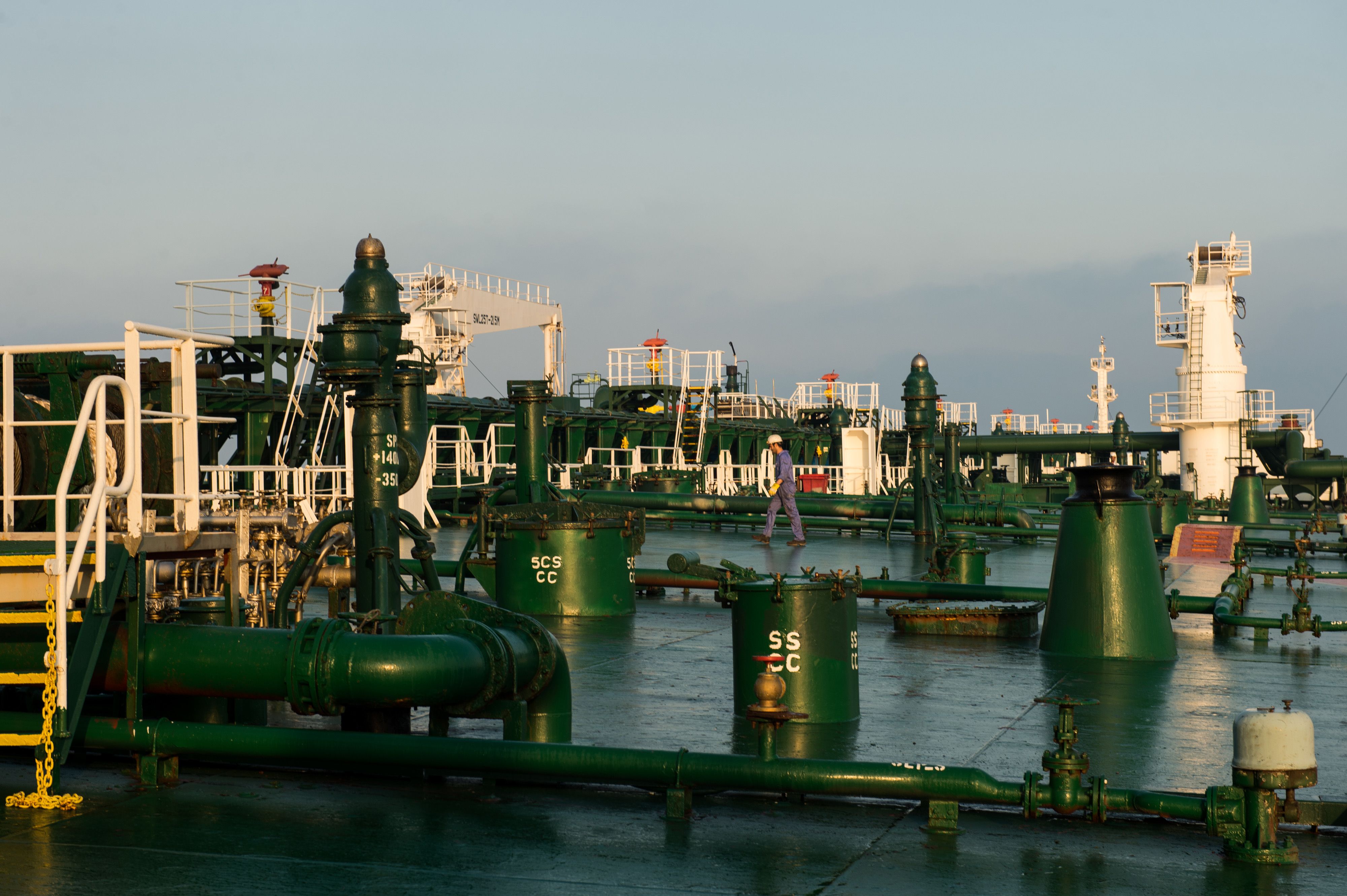Iran’s recession is driving growth slowdown in oil exporters: IMF

[ad_1]
The oil tanker ‘Devon’ prepares to transfer crude oil from Kharg Island oil terminal to India in the Persian Gulf, Iran, on March 23, 2018.
Ali Mohammadi | Bloomberg | Getty Images
DUBAI — The impact of U.S. sanctions on Iran’s economy is dragging on the broader region’s activity, according to the latest economic health check from the International Monetary Fund (IMF).
The organization predicts a 1.7% contraction in output for non-Gulf Cooperation Council (GCC) oil exporters, after already having contracted by 1.1% last year.
“This is mainly driven by developments in Iran, where the recession is expected to deepen, reducing projected growth by almost 10 percentage points during 2018–20, ” the IMF reported in its 2019 Regional Economic Outlook: Middle East and Central Asia Update, published Monday.
Iran’s economy is expected to shrink by 6% this year, after having contracted 3.9% last year, the IMF says. By contrast, it clocked 3.8% growth in 2017, before the Trump administration re-imposed economic sanctions after withdrawing from the 2015 nuclear deal that offered the Islamic Republic relief from prior sanctions.
Economists say the combination of hard-hitting sanctions, particularly on the country’s oil exports that began last November, as well as years of economic mismanagement have led to skyrocketing inflation, rising unemployment and a frantic rush to buy dollars.
Inflation could exceed 40%
Inflation in Iran could reach as high as 40% or higher this year, a senior IMF official said on Monday.
“Clearly the re-imposition of sanctions and the removal of the waivers will have additional negative impact on the Iranian economy both in terms of growth and in terms of inflation, where inflation could reach 40 percent or even more this year,” Jihad Azour, the IMF’s Middle East and Central Asia director, told Reuters.
This assessment, Azour said, was made before the U.S. announced the end of sanctions waivers for eight of Iran’s largest oil buyers. In 2017, Iran’s inflation rate was just over 9%.
For oil exporters in the wider Middle East and North Africa region including the GCC, a slowdown is projected and is still to some extent linked to Iran, the report said.
“Growth in MENAP oil exporters is projected at 0.4 percent in 2019,” down from 0.6% in 2018, the lender wrote, using an acronym that includes Afghanistan and Pakistan. “This mainly reflects a sharp decline in Iran’s economic activity (of 6 percent), oil production cuts (in line with the December 2018 OPEC+ agreement), and tighter domestic financial and monetary conditions in some countries.”
Secretary of State Mike Pompeo has said the sanctions have so far cost Iran $10 billion in hard currency. The country’s currency, the rial, has fallen 60% in value in the last year.
Hezbollah feeling the squeeze
On the ground, Iran’s inflation — around its highest since the peak of the Obama-era sanctions in 2012 — has translated into increasing difficulties for ordinary Iranians trying to buy basic goods like food and medicine.
Politically, the sanctions are also beginning to bite beyond Iran’s borders. Iranian-backed Hezbollah, the Lebanese Shia militant group and political party designated as a terrorist organization by the U.S., has made blunt calls for donations as its main benefactor in Tehran gets squeezed.
Hezbollah leader Hassan Nasrallah, in a television address in March, told supporters: “Public support is needed.” The U.S. government estimates Iranian funding for the group at $700 million annually.
Pressures on the government in Tehran are also evident in sporadic protests that have cropped up around the country since late 2017, largely as a result of local public service issues, economic discontent and deteriorating living standards.
Still, regional experts largely express doubt that the economic measures will push Iran to change course in terms of its foreign interventions in places like Syria, Lebanon and Yemen, nor with its ballistic missile testing, activities Trump used as the basis of the Iran deal withdrawal.
Iranian officials have maintained tough rhetoric, insisting that American measures won’t bring the country to its knees.
But Iran’s president in January called the current economic situation the country’s “toughest in 40 years.” And on Sunday, foreign minister Javad Zarif expressed readiness to negotiate with the U.S. on the release of American prisoners in Iran — “a clear rebuttal to Tehran’s talking point that it does not negotiate under pressure,” wrote Henry Rome, Iran analyst at political risk consultancy Eurasia Group.
“The comments likely showed that Tehran’s strident opposition to talking with the Trump administration is eroding,” Rome wrote in a research note Sunday. While negotiations between the U.S. and Iran are far from the base case, as Eurasia’s analysts see it, the firm has raised the probability of “limited talks” from 20% to 30%, Rome said.
Source link





